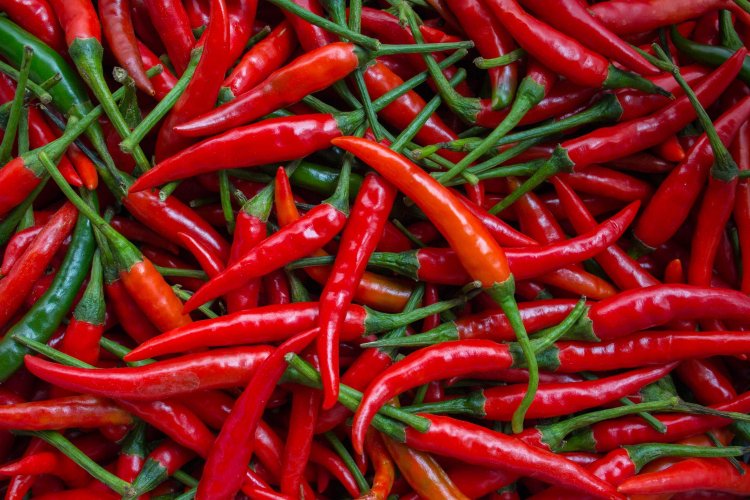Paprika: Exploring the Vibrant Spice of Culinary Delight
Paprika, a beloved spice cherished for its vibrant color, robust flavor, and culinary versatility, has a rich history and a plethora of culinary applications. In this comprehensive exploration, we delve into the origins, varieties, nutritional composition, health effects, and diverse culinary uses of paprika.

Origins and Varieties
Paprika traces its roots to the Americas, where indigenous peoples cultivated and consumed various species of Capsicum peppers for centuries. Spanish and Portuguese explorers introduced these peppers to Europe in the 16th century, where they were embraced for their unique flavors and culinary potential. Today, paprika is primarily produced in regions such as Spain, Hungary, and Turkey, each renowned for their distinctive varieties and production methods.
The flavor profile of paprika can vary significantly depending on factors such as the type of pepper used, the region of cultivation, and the processing technique. Common varieties of paprika include:
Sweet Paprika
Made from mild, sweet peppers, this variety imparts a subtle sweetness and vibrant color to dishes without adding heat.
Hot Paprika
Produced from spicier peppers, hot paprika adds a fiery kick to recipes and is favored in cuisines that embrace bold, spicy flavors.
Smoked Paprika (Pimentón)
Originating from Spain, smoked paprika is made by drying peppers over oak fires, imparting a distinctive smoky aroma and flavor to the spice.
Nutritional Composition
Paprika not only enhances the taste and visual appeal of dishes but also offers several nutritional benefits. A 1-tablespoon (6.8 grams) serving of paprika typically provides:
- Calories: 19 kcal
- Protein: 1 gram
- Fat: 1 gram
- Carbohydrates: 4 grams
- Fiber: 2 grams
- Vitamin A: 69% of the Daily Value (DV)
- Vitamin C: 36% of the DV
- Iron: 13% of the DV
Paprika is a rich source of antioxidants, including carotenoids such as beta-carotene and capsanthin, which contribute to its vibrant red color. Additionally, the spice contains capsaicin, the compound responsible for its pungency and several potential health benefits.
Health Effects
Consuming paprika in moderation may offer various health advantages:
Anti-inflammatory Properties
Capsaicin, found in hot varieties of paprika, exhibits anti-inflammatory properties, which may alleviate symptoms associated with conditions such as arthritis and inflammatory bowel disease.
Cardiovascular Health
The antioxidants in paprika may help reduce oxidative stress and inflammation, thereby promoting heart health and lowering the risk of cardiovascular diseases.
Metabolic Benefits
Capsaicin has been linked to increased metabolism and fat oxidation, potentially aiding in weight management and improving metabolic health.
Digestive Aid
Paprika stimulates gastric secretions, promoting digestion and alleviating symptoms of indigestion and bloating.
However, individuals with gastrointestinal conditions or sensitivities to spicy foods should consume paprika cautiously to avoid exacerbating symptoms.
Culinary Uses
Paprika is a staple ingredient in a diverse array of cuisines, enhancing the flavor and visual appeal of dishes across the globe. Some popular culinary uses of paprika include:
Seasoning Meats
Paprika adds depth of flavor and color to meats such as chicken, pork, and beef, whether used in rubs, marinades, or as a garnish.
Soups and Stews
It lends a subtle sweetness and earthy aroma to soups, stews, and casseroles, complementing the flavors of vegetables, legumes, and meats.
Rice and Grain Dishes
Paprika is often used to season rice dishes, pilafs, and grain-based salads, infusing them with a warm, smoky flavor.
Eggs and Breakfast Dishes
Sprinkled over scrambled eggs, omelets, or breakfast potatoes, paprika adds a pop of color and a hint of spice to morning meals.
Dips and Spreads
Paprika is a key ingredient in dips such as hummus, tzatziki, and salsa, providing a subtle heat and enhancing the overall flavor profile.
From Hungarian goulash to Spanish paella, paprika plays a central role in countless traditional recipes, showcasing its adaptability and cultural significance in global cuisine.
Conclusion
Paprika, with its captivating color, nuanced flavor, and nutritional benefits, stands as a testament to the transformative power of spices in culinary artistry. Whether used to add a touch of sweetness to a savory dish or to infuse a fiery heat into a recipe, paprika continues to captivate taste buds and inspire culinary innovation around the world. So, the next time you embark on a culinary adventure, consider reaching for the vibrant spice of paprika to elevate your dishes to new heights of flavor and delight.
Disclaimer
The information provided in this article is for educational purposes only and should not be considered medical advice. If you have any health concerns or are experiencing symptoms, it is important to consult with a healthcare professional, such as a doctor or clinic, for proper diagnosis and treatment. Always seek the advice of your doctor or other qualified health provider with any questions you may have regarding a medical condition. Do not disregard professional medical advice or delay in seeking it because of something you have read in this article.
Hashtags
#Paprika #CulinarySpice #HealthBenefits #NutritionalValue #CookingTips #Gastronomy #Spices #Foodie #HealthyEating #FlavorEnhancer
What's Your Reaction?





















